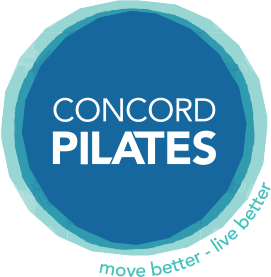Get Help To Help Yourself
Some of you have already heard my story of what I'm calling my "hiking injury". It was not really an injury, but due to a very poorly fitted backpack and decades of rounded shoulders (What you Mara? Yes, me.) my neck went into a spasm. The morning after I returned from my hiking vacation over Labor Day weekend, I woke up with a stiff neck. Normally not a big deal. But when this stiff neck didn't get any better after two weeks, and I also felt some tingling and numbness into my left arm and hand, I started to get nervous (polite for "freaked out".) Nerve pain is something I have experienced in my early 20s the last time, when it suffered from a bout of sciatica from a bulging disc.
I scheduled sessions with my team of valued colleagues (Chiropractor Dr. Chelsea Doughty, Lynne Ainsworth from Align Physical Therapy, and our very own massage therapist Jean Stack to try and get to the bottom of what's causing my symptoms. After each of their evaluations, we've collectively come to the conclusion that I'm dealing with T4 syndrome (yeah, I've never heard of that one before either.) and thoracic outlet syndrome.
I happened to take a continuing education workshop in the middle of all this, in which I've learned the benefits and use of a new piece of equipment called "Oov" that I've now started using with some of you already. The reason why I was so eager to learn to use it, was because it is a fantastic tool to correct shoulder alignment. Co-incidence? Serendipity? Most certainly! Synchronicity? Big time.
I'm extremely excited to report that my pain is down to a 2 or 3 on the scale of 1 to 10. Huge improvement. the reason why I saw such tremendously fast results is that I did specific exercises daily. On weekends, twice or three times daily.
I'm telling this story because I felt - once gain - the power of Pilates first hand. It's a truly healing practice. I took my healing journey into my own hands and it worked. I consulted specialists in their respective fields but I did the work myself. I recently read this:
CLIENT
assists
TRAINER
to help
CLIENT
to support
HERSELF
discover movement
be independent
return to life.
Doctors, physical therapists, chiropractors, massage therapists, Pilates teachers, we can all help with diagnosing the problem and assessing the body's strengths and weaknesses. The first step, of course, is knowing what you're dealing with. But once you know what's causing your symptoms, it's up to you.
A teacher's eye on you on a regular basis is necessary to realize where we are out of alignment (but feel that we're perfectly symmetrical.) But a teacher doesn't have to supervise every single one of your practice sessions either. As I often say: "Your Pilates teacher is not walking around with you all day to remind you to pull your shoulders down." You have to take responsibility and remind yourself over and over.
Here are several ways how you can get the most out of your Pilates practice:
Do your homework exercises every day. It doesn't have to be an hour-long program. Just 10 minutes. Pick 2-3 of the most effective exercises to do daily.
Come to your sessions with as much concrete information as you can. Bring write-ups of your doctors, physical therapists, and chiropractors to your private sessions. The more specific information you give your teacher, the more specifically we can help you (and skip the time of figuring out the cause of your problem, when someone else already did.)
Pilates is a dialogue between student and teacher. Ask questions if you don't understand. Try your very best to answer the constant question: "Where are you feeling this?" even though I know it's hard to describe sometimes. Becoming aware of how your body feels during movement is a skill that can be trained, and if you've never paid attention to it in the past, then it will take a bit longer in the beginning, but once you have body awareness you will never unlearn it. It's like riding a bike, like that.
